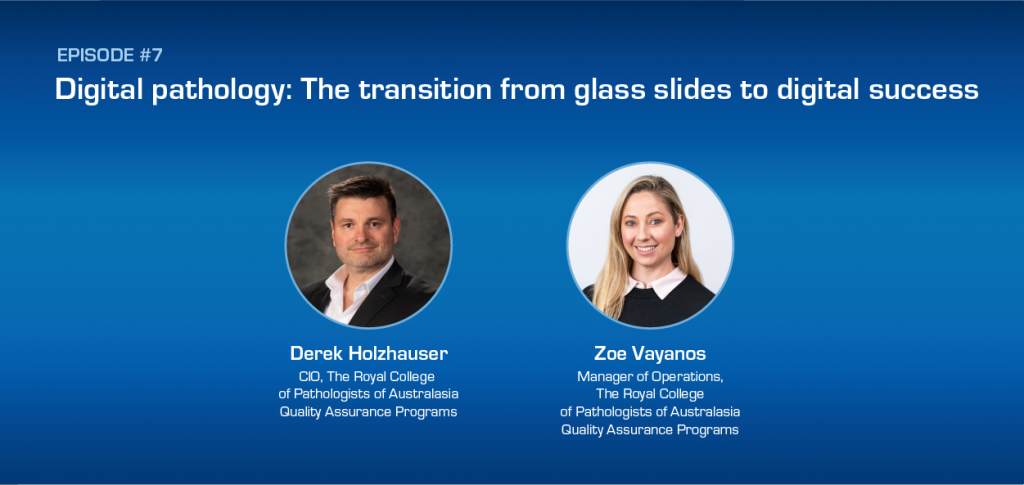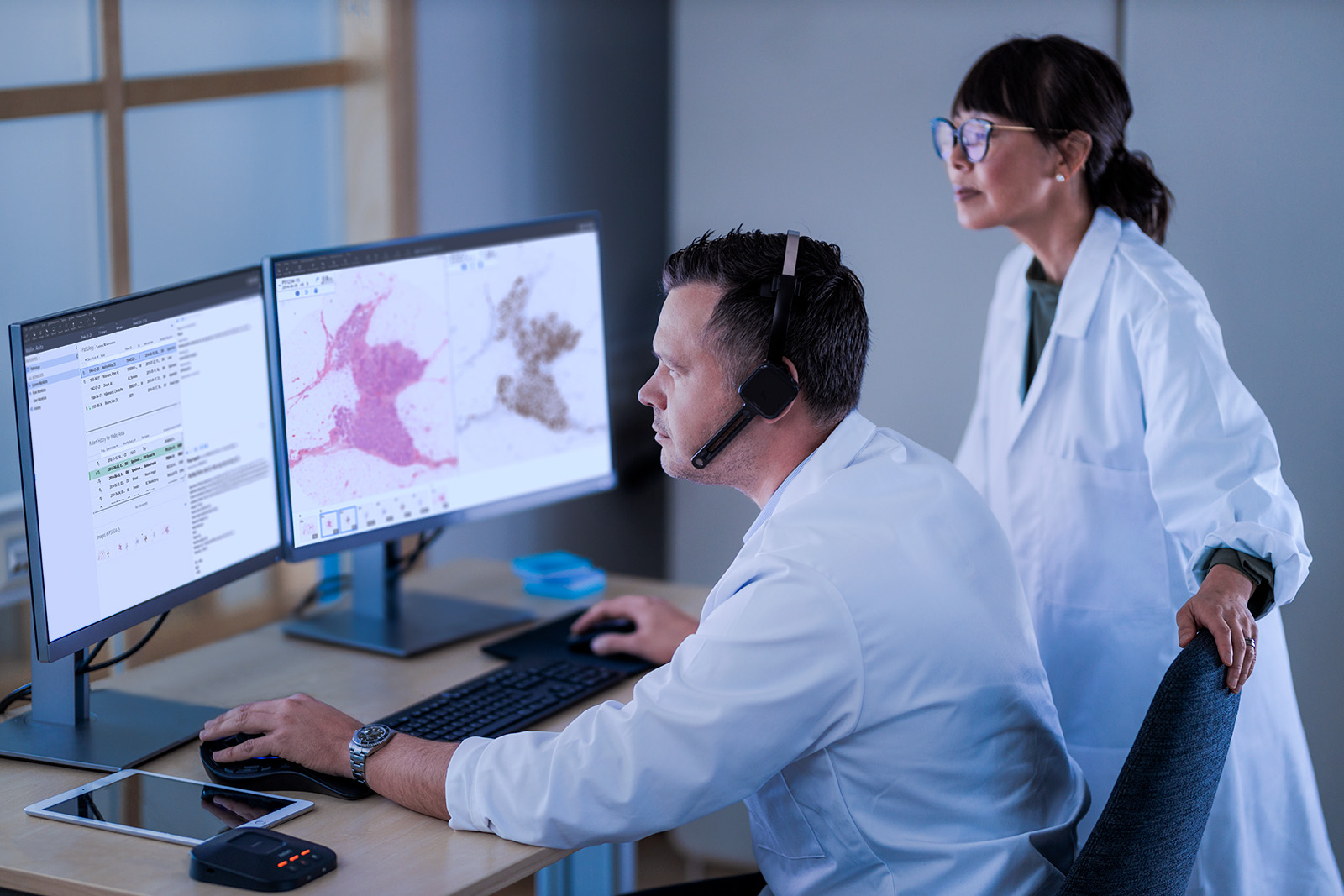Transitioning from whole slide to digital pathology isn’t just a shift—it’s a true evolution. In this episode, we follow up on Driving the transition to digital pathology article together with Derek Holzhauser, CIO, and Zoe Vayanos, Manager of Operations at The Royal College of Pathologists of Australasia Quality Assurance Programs. Get an inside look at their journey, explore the practical impact of this transformation, and learn about the new opportunities it unlocked.

IN THIS EPISODE:
- [01:02] Zoe and Derek delve into the QAP’s mission and share how they’ve achieved greater sample consistency using digital pathology
- [10:16] What sets the Sectra platform apart from other options
- [13:34] Current AI initiatives by the QAP, including a comparison of AI scoring with human assessment
- [19:52] Challenges currently faced by the QAP
- [27:41] Advantages offered by cloud technology in the context of digital pathology
- [32:51] Whether the advantages of transitioning to digital pathology outweigh the associated costs
KEY TAKEAWAYS:
- The transition from whole slide to digital pathology is a pivotal evolution in the field.
- Sectra’s digital pathology solution facilitates the expansion of digital imaging across disciplines and reduces reliance on USB devices.
- The adoption of Sectra’s platform allows for scanner upgrades, resulting in a notable enhancement in image quality.
- The ability to expand their virtual program enables the QAP to extend its services to remote regions, bridging gaps in access to pathologists and ultimately enhancing education and patient care.
- While the cloud offers many benefits for digital pathology, the decision to adopt cloud technology varies for each organization and should be tailored to their unique needs.



